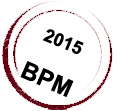
POST CARDS PRINTED BY BHUTAN POST
The history of picture Postcards in Bhutan can be traced to the late 1960s. The first two issues of picture postcards of Bhutan initially printed by Posts & Telegraphs belong to postal stationary as they bear a postal stamp imprinted on them.
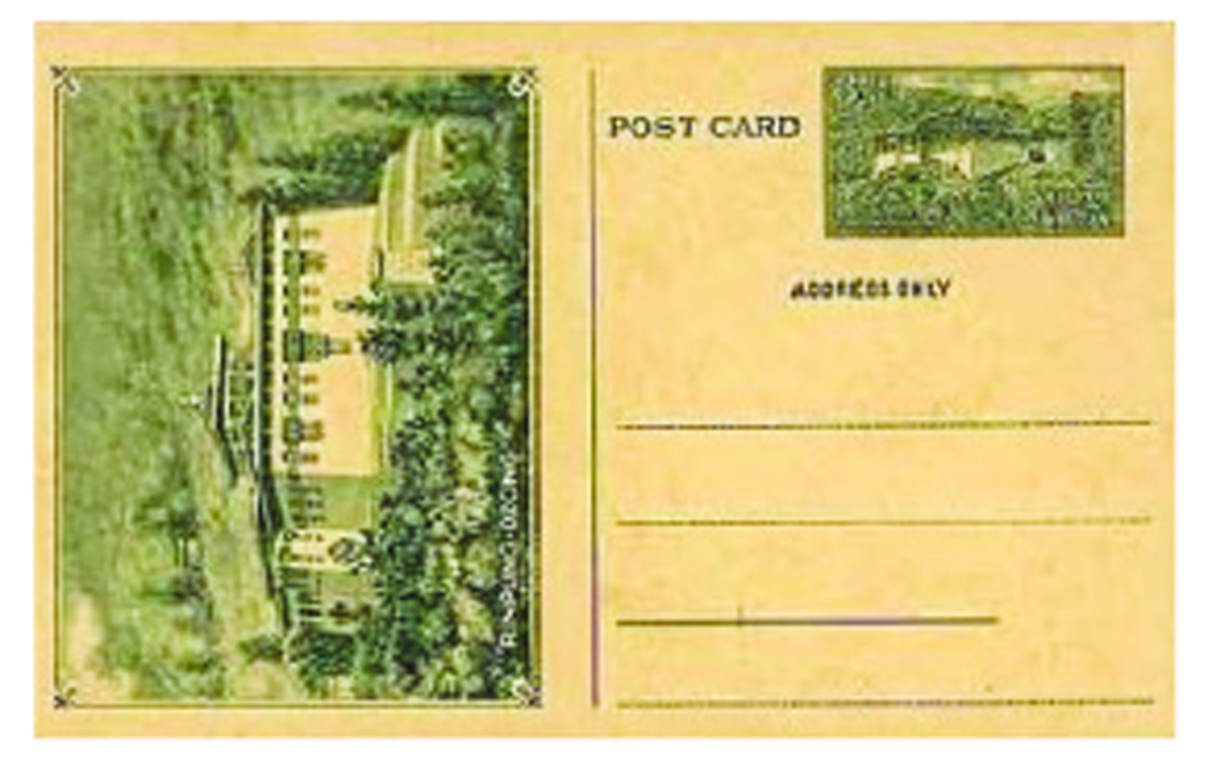 In 1966, a postcard was issued which showed:
In 1966, a postcard was issued which showed:
- an etched drawing of Rinpung Dzong (Paro Dzong) on the left back side
- the preprinted postage stamp of 6 Chhetrum shows a drawing of Simtokha Dzong
- was dark green color
- on the left, the front side is free for writing of a message.
In 1967, Posts & Telegraphs released a set of 10 postcards with features as follows:
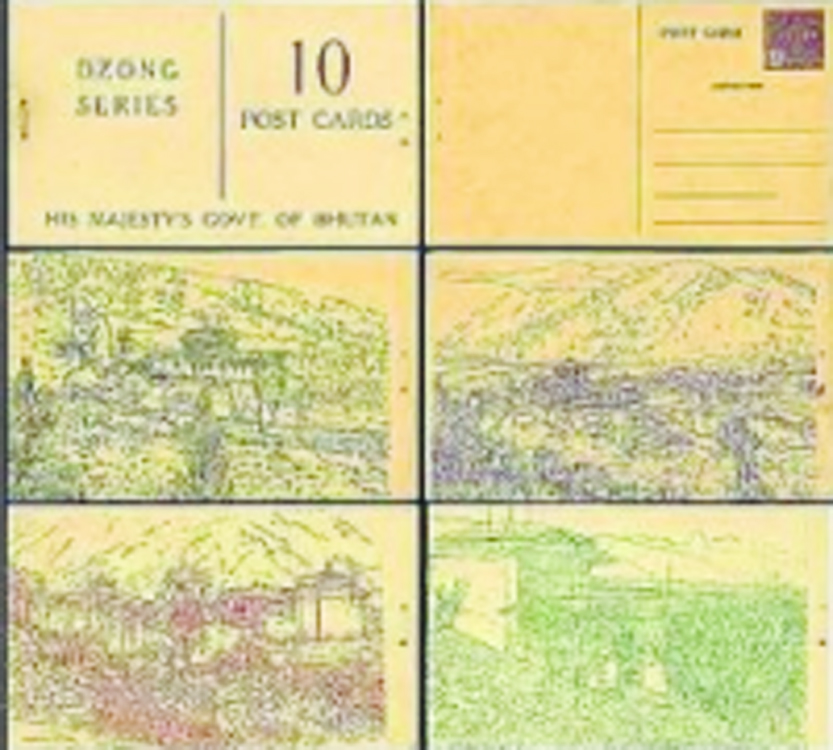
- these picture postal cards were the first true picture post cards issued in Bhutan
- the front side was completely used for the drawing
- the left side of the divided back open for a message and the right side with the imprinted stamp and address lines, as we are used to in a typical modern standard picture card lay-out.
- are in principle an overprint on the single ‘buff-colored’ postal card issued in the same year which carries the same imprint of a purple, crossed Dorjis 10 Chhetrum
- This was the last postcard with preprinted postage till 2008 when the “Color-Your-Own-Stamp” set of postcards with a 20 Ngultrum imprinted stamp was published
In 1968, Bhutan Post issued a set of first ever multi-color 9 picture cards as follows:
- had a modern standard format (100 x 150mm).
- printed on art board paper by the Reliable Calendar Company of Calcutta
- the pictures show dzongs, lhakhangs, a folk dance, a yak, a mother etc.
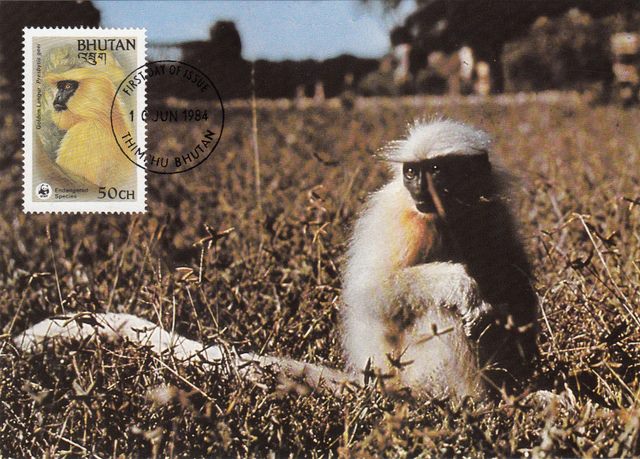 The first Maxi cards were produced by Bhutan Posts and Telegraphs in 1968 (Paintings of Van Gogh and Millet). The next sets of maxi cards issued afterwards starting with 1984 (Golden Langur) have been produced by WWF with limited direct input by P&T or Bhutan Post.
The first Maxi cards were produced by Bhutan Posts and Telegraphs in 1968 (Paintings of Van Gogh and Millet). The next sets of maxi cards issued afterwards starting with 1984 (Golden Langur) have been produced by WWF with limited direct input by P&T or Bhutan Post.
Between 1972 and 1976, four such kind of sets of postcards are issued as follows:
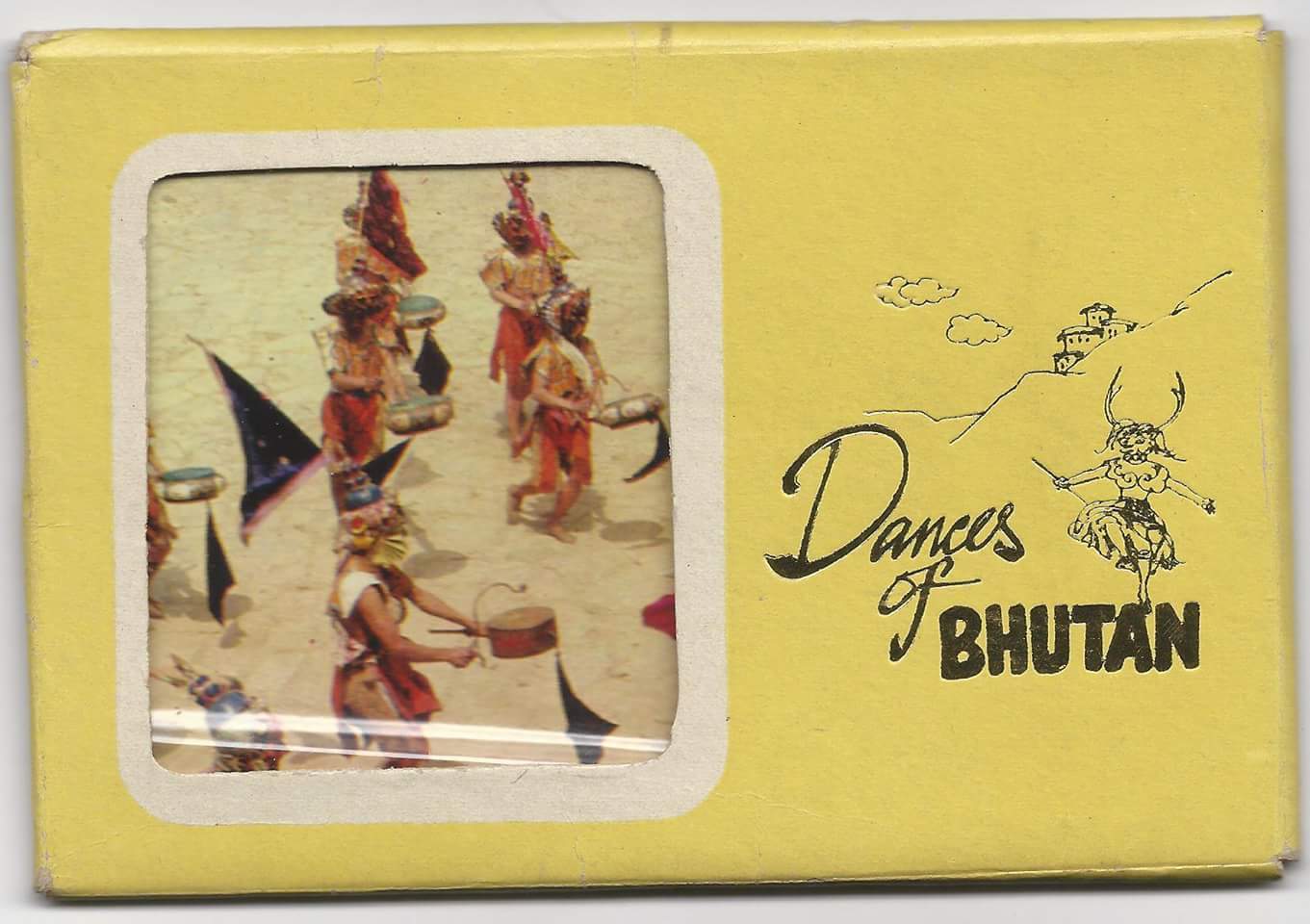
-
- postcards are packed in a thin, carton cover with the words “Dances of Bhutan” or “Views of Bhutan”.
- the cover has at the front side a transparent window providing a partial view of the first postcard.
- the size of these postcards went back to the smaller, old standard postcard format (90 x 140 mm), while also the glossy chrome print was rather old-fashioned.
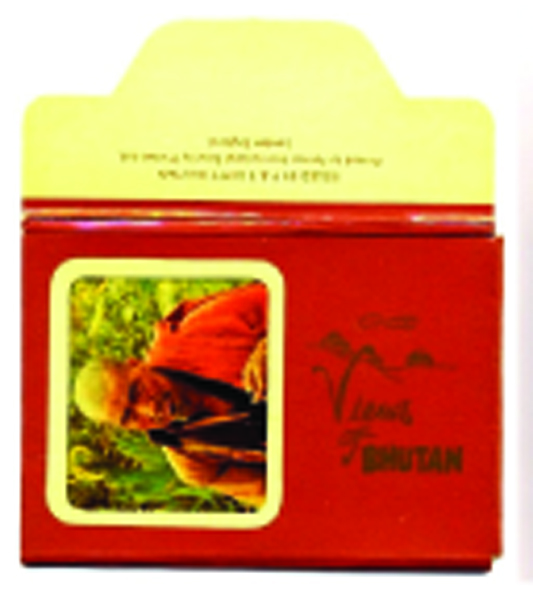
In 1974, on the occasion of the coronation of the Fourth Druk Gyalpo, another set was issued, printed this time by Format International Security Printers Ltd. The brown colored cover carries the text “Views of Bhutan” and contained 6 postcards.
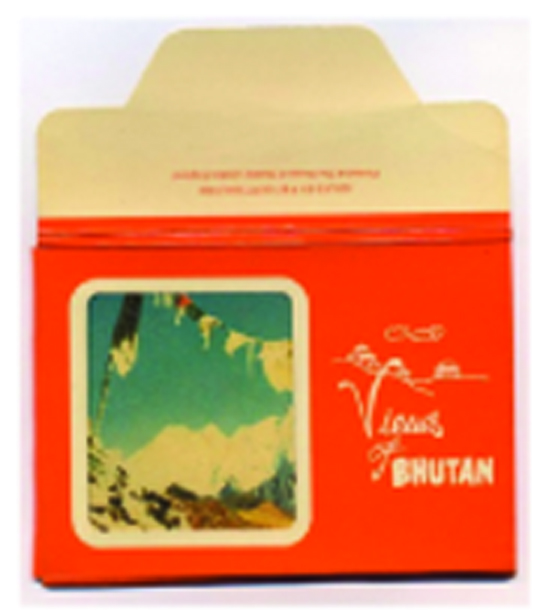
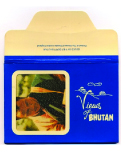 In 1976, two other covers, one orange and one blue colored also with the text “Views of Bhutan”, were issued with 8 postcards each, which were printed by the House of Questa. The pictures in these four sets as follows:
In 1976, two other covers, one orange and one blue colored also with the text “Views of Bhutan”, were issued with 8 postcards each, which were printed by the House of Questa. The pictures in these four sets as follows:
- “Dances/Views of Bhutan” and show the usual dzongs and lhakhangs, valleys, mountains, dances, ceremonies, a monk, a mother and child.
- Long titles on the “Dances of Bhutan” cards, for instance “Procession of the jury of the Court of Chheogyi Gyalpo leaded by Rasha, with Lamas blowing (jail) and burning incense standing in the foreground heralding their welcome.”,
- cards under “Views of Bhutan” would simply state “A lama in deep prayer” or “Thangka painting”.
Late 1992 or early 1993, a set of some 63 color postcards showing among others dzongs, lhakhangs, valleys, landscape views, dances, people, and the newly opened GPO in Thimphu (in 1988).
In 1993, the Environmental Trust Fund set was released, 17 different postcards in full color in a carton cover, showing landscapes, local flowers, animals and the Rinpung Dzong in Paro. The printer was Secura Ltd in Singapore.
 In 1996, the Posts &Telegraphs Department was transformed into the autonomous state owned Corporation with trading name Bhutan Post and has issued a steady number of sets of postcards as follows:
In 1996, the Posts &Telegraphs Department was transformed into the autonomous state owned Corporation with trading name Bhutan Post and has issued a steady number of sets of postcards as follows:
- a) A set of some three postcards showing the traditional dress of Laya and Merak & Sakten.
- b) A set of 18 postcards showing mask dances, dzongs, lhakhangs and chortens, lakes, a mountain, and Buddhist symbols and figures (the East, South, West and North Guardian).
In the year 2000, set of 6 postcards showing multi colored gouache ink style drawings of dzongs under the heading “Welcome to the 2000 New Millenium” as follows:
- each card carries at the back side, the official ‘25 Years of Enthronement’ logo with the raven crown.
- left side of the back has been colored light grey.
- “BHUTAN POST” is printed in large capitals at the back in the lower left corner but no logo

In 2001, a set of 10 postcards, with showing local animals, lhakhangs, some landscapes, rhododendrons and a girl at a festival. The new Bhutan Post logo (black and white) is used with the slogan “Bhutan Post Your Friendly Service Provider” .
Also in 2001, a set of 14 postcards, using pictures of dzongs, lhakhangs, Chorten Kora, the Chomolhari and Tshankha Village in Trongsa. Bhutan Post logo is used in color but without the slogan ‘Your Friendly Service Provider’.
In 2008, on the occasion of the participation of Bhutan to the Smithsonian Folklife Festival (25 June – 6 July 2008) in Washington DC, Bhutan Post issued a set of 4 postcards as follows:
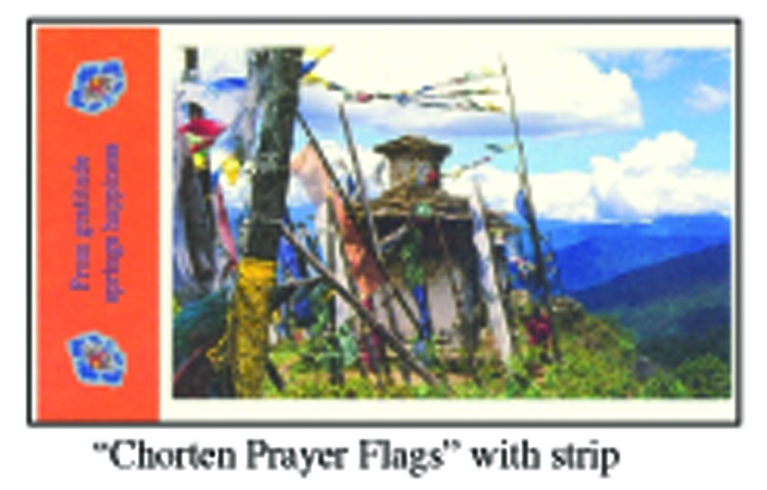
- imprinted “Color Your Own” postage stamps
- four different postcards with each a different picture and imprinted post stamp, all under the theme “From gratitude springs happiness”.
- Had one picture of a drawing showing the ‘Four Friends’ and three cards with photos of prayer flags at a chorten, traditional dancers in the courtyard of a dzong, and of a red mask, the latter representing according to the title of the postcard “Gross National Happiness”.
- stamps designs use stylized drawings of four auspicious Buddhist symbols: the Endless Knot, the Conch Shell, the Parasol, and the Lotus.
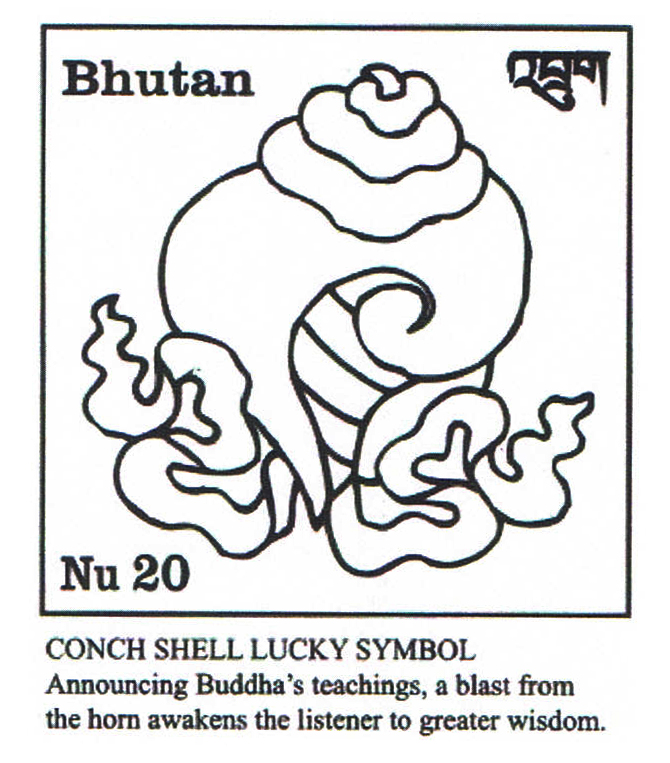
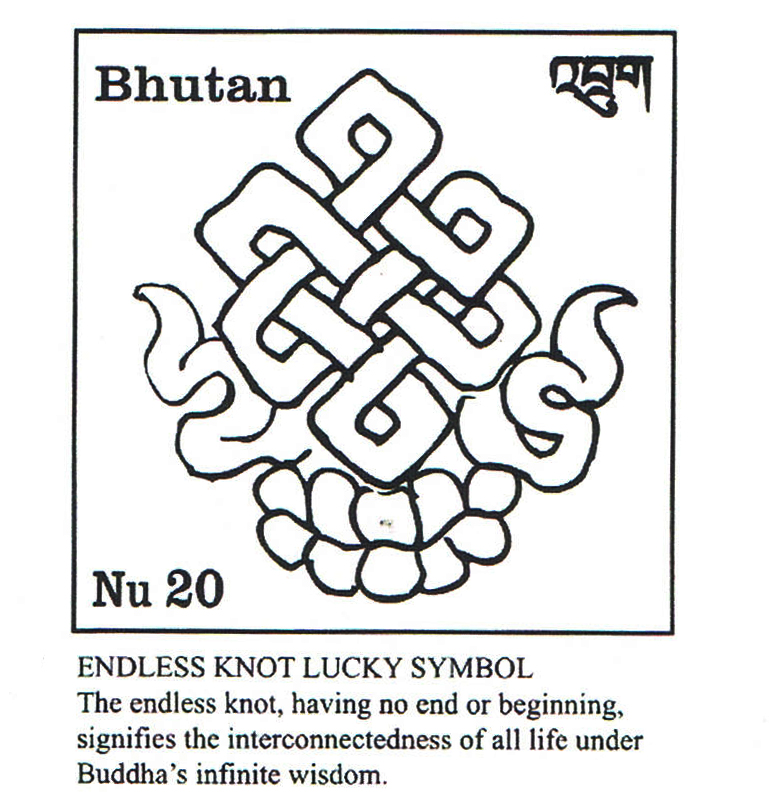
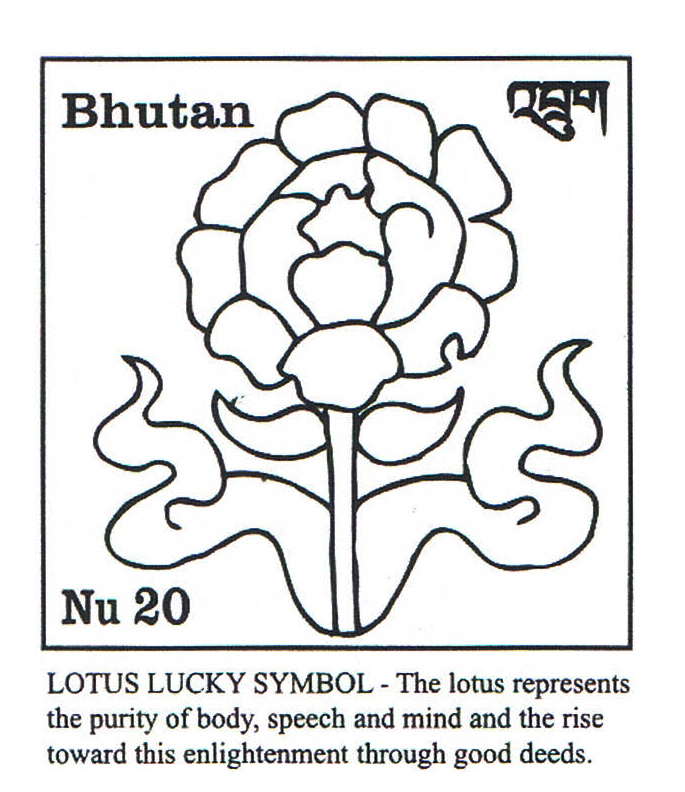
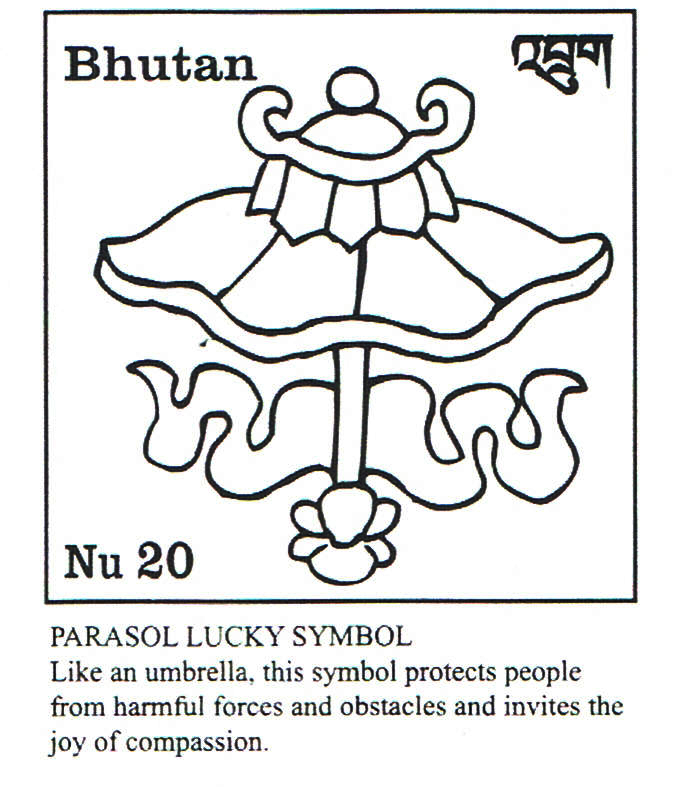
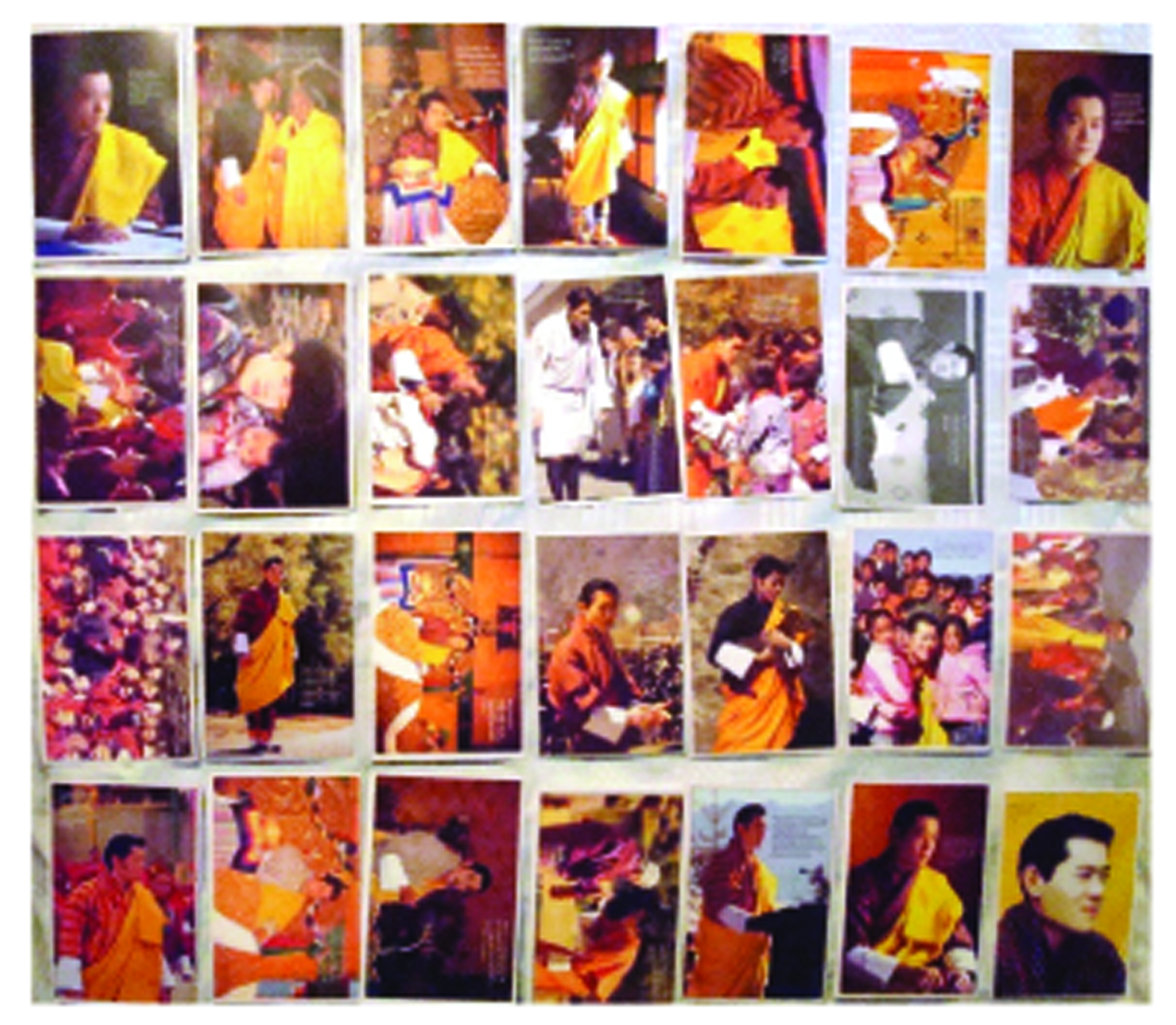 In the 20th February 2008 issue, Kuensel (Bhutanese newspaper) published on the occasion of the 28th Birth Anniversary of His Majesty, a set of 7 thin carton pages with each 4 post cards on them, so 28 different postcards in all, which (in cooperation with Bhutan Post) could be posted for free the next three days (21, 22 and 23 February 2008) to destinations within Bhutan. The postcards had to be cut out of the pages by hand.
In the 20th February 2008 issue, Kuensel (Bhutanese newspaper) published on the occasion of the 28th Birth Anniversary of His Majesty, a set of 7 thin carton pages with each 4 post cards on them, so 28 different postcards in all, which (in cooperation with Bhutan Post) could be posted for free the next three days (21, 22 and 23 February 2008) to destinations within Bhutan. The postcards had to be cut out of the pages by hand.
In 2010, a set of 17 different picture post cards, all of the 5th King Jigme Khesar Namgyel Wangchuck in remarkable metallic-like colors was issued.
